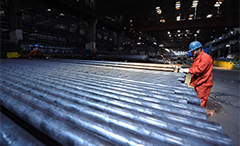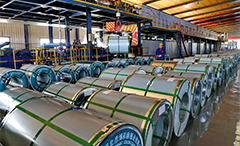Jan-Sept steel exports rise by 2.4%
China Daily 2016-10-28
The Asian market has been the main contributor to the growth of steel exports in the first nine months of this year, according to a top official of the China Iron & Steel Association in a news release on Oct 27.
Steel exports in the first nine months stood at 85 million metric tons, up 2.4 percent from the same period last year.
Wang Yingsheng, deputy president of CISA, said that the 2.4 percent steel export volume growth in the first three quarters was generated by the Asian market, especially the emerging markets where construction demand is high.
He said that given by the current situation, steel exports to Asia are not going to drop. With the Belt and Road Initiative, they are expected to increase.
The number of anti-dumping and anti-subsidy cases overseas was 38 in the first three quarters, compared to 37 in the whole year of 2015.
“Increasing trade frictions have prompted many steel companies to stabilize their overseas market and turn to direct sales, circumventing trade companies so that they have first-hand information on the requirement of their buyers,” said Wang.
Wang said that developed countries’ demand for steel has remained lackluster since the financial crisis in 2008, while demand in Asia, especially ASEAN countries, has been on the rise.
“Locally produced steel in countries in Asia and the Middle East is generally of small volume, creating markets for China’s exports,” said Wang.
This year has seen the steel market rebounding from across the board losses last year. The 373 CISA-member steel smelters, which account for around 80 percent of the country’s capacity, had 25.2 million yuan ($3.7 million) profits.
“The main driver for profitability this year is the significant reduction of costs. It should be noticed that the profit rate (net profit/cost) is merely 1.27 percent, far lower than the average 5 percent among industrial companies. Therefore, steel companies’ profitability is still very vulnerable,” said Chen Yuqian, director of the fiscal and asset department of CISA.
The main consumers of steel in the fourth quarter will be real estate, construction and machinery manufacturing, said Chen.
“Property, transportation, environmental-management and irrigation facilities will generate a lot of demand for steel. Machinery manufacturing, such as automobile production, which has been growing by roughly 10 percent year-on-year in recent years, is also a key engine of steel demand. Yet the demand won’t be robust in the rest of the year,” said Chen.
Chen warned that the increase in steel output in the fourth quarter needs to be closely monitored to avoid price wars if supply outstrips demand.a




